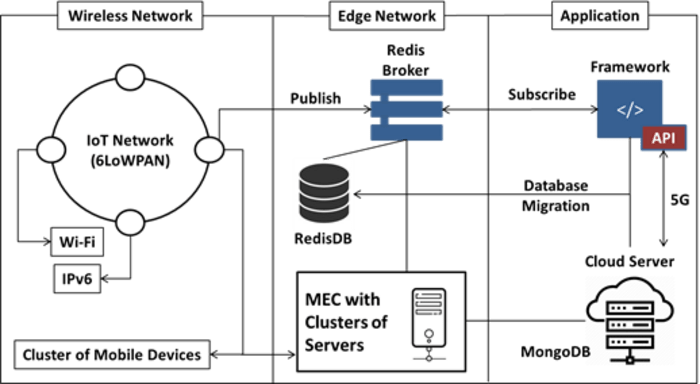All recent technological findings can be collectively used to strengthen the industrial Internet of things (IIoT) sector. The novel technology of multi-access edge computing or mobile edge computing (MEC) and digital twins have advanced rapidly in the industry. MEC is the middle layer between mobile devices and the cloud, and it provides scalability, reliability, security, efficient control, and storage of resources. Digital twins form a communication model that enhances the entire system by improving latency, overhead, and energy consumption. Methods The main focus in this study is the biggest challenges that researchers in the field of IIoT have to overcome to obtain a more efficient communication environment in terms of technology integration, efficient energy and data delivery, storage spaces, security, and real-time control and analysis. Thus, a distributed system is established in a local network, in which several functions operate. In addition, an MEC-based framework is proposed to reduce traffic and latency by merging the processing of data generated by IIoT devices at the edge of the network. The critical parts of the proposed IIoT system are evaluated by using emulation software. The results show that data delivery and offloading are performed more efficiently, energy consumption and processing are improved, and security, complexity, control, and reliability are enhanced. The proposed framework and application provide authentication and integrity to end users and IoT devices.
Journal
Virtual Reality & Intelligent Hardware
DOI
10.1016/j.vrih.2022.07.005
Article Title
Digital twins and multi-access edge computing for IIoT
Article Publication Date
21-Dec-2022

















